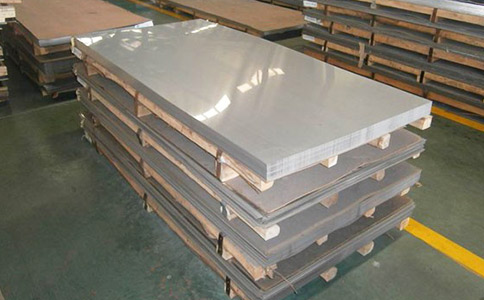
316 stainless Steel Plate
The corrosion resistance, and high temperature strength of 316 stainless steel have been greatly improved due to the addition of Mo element. The high temperature resistance can reach 1200-1300 degrees and can be used under harsh conditions. &nbs
PRODUCT INTRODUCTION
The corrosion resistance, and high temperature strength of 316 stainless steel have been greatly improved due to the addition of Mo element. The high temperature resistance can reach 1200-1300 degrees and can be used under harsh conditions.

316 stainless steel plate characteristics:
Due to the addition of Mo, its corrosion resistance, atmospheric corrosion resistance and high temperature strength are particularly good, and can be used under harsh conditions; Excellent work hardening (non-magnetic); Excellent high temperature strength; No magnetism in solid solution state; Cold rolled products have good gloss and beautiful appearance; Compared with 304 stainless steel, the price is higher.
316 stainless steel plate purpose:
Equipment used in seawater, chemical, dye, papermaking, oxalic acid, fertilizer and other production equipment; Photography, food industry, coastal facilities, ropes, CD rods, bolts, nuts.
Chemical composition of 316 stainless steel plate:
C≤0.03 、Si≤0.80 、Mn≤1.2 、Cr:24-26 、Ni:6-8 、S≤0.02 、P≤0.035 、Mo:3-5 、N:0.24-0.32
Mechanical properties of 316 stainless steel plate products:
1、 Mechanical properties of 316 stainless steel plate at room temperature:
Steel type: wall thickness ≤ 20mm; δ B / MPA: 800-1000 δ 0.2/MPa:≥550 、 δ 5 /%: ≥ 25, hardness (HV): 290
2、 Mechanical properties of 316 stainless steel plate at room temperature - 200 ℃:
Steel variety temperature / ℃ δ b/MPa
Room temperature ≥ 530
Plate 100 ≥ 450
200 ≥400
3、 Mechanical properties of 2507 large diameter seamless pipe
external diameter × Wall thickness δ b/MPa δ 0.2/MPa δ 5 /% hardness (HV)
273.0mm × 4.19mm 894 644 40 284
323.9mm × 4.57mm 858 662 45 270
406.4mm × 4.74mm 854 657 41 272
National standards:
| ASTM/ASME | A240 - UNS S32750 |
| EURONORM | 1.4410 - X2 Cr Ni MoN 25.7.4 |
| AFNOR | Z3 CN 25.06 Az |
| DIN/EN 1.4410、ASME SA-240 | |
316 stainless steel plate has ideal microstructure after suitable solution treatment α/γ A biphasic structure with a ratio of about 50 / 50. When the solid solution temperature is above 1050 ℃, the number of ferrite phases in steel will increase with the increase of temperature, but due to the high nitrogen content, the phase proportion of steel below 1300 ℃ will not change significantly. If the steel is not aged at different temperatures (or affected by heat), it will α+γ There will be on the substrate γ 2 formation and δ、χ、 R、 α` Intermetallic phase and Cr2N and other oxides precipitate. Because the carbon content in steel is low (generally 0.01% - 0.02%), there is generally no carbide in steel.

